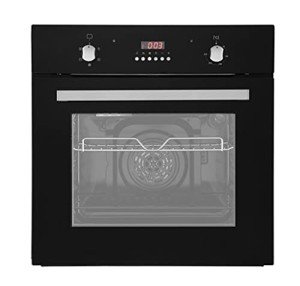Why All The Fuss About Built In Range?
Comprehending the Built-In Range: A Deep Dive Into One of one of the most Versatile Programming Features The built-in function range() is one of the most typically utilized features in programs, especially in Python. Its simplicity and flexibility make it a necessary tool for designers, engineers, and information scientists alike. In this article, we will check out the essential elements of the built-in range function, its syntax, usage cases, and some practical examples to assist you leverage its power in your coding undertakings. What is the Built-In Range? In Python, the range() function produces a series of numbers. It is often utilized for iteration, especially within loops, enabling programmers to execute a block of code a specific variety of times without by hand defining each iteration. Syntax of the Range Function The range() function can take one, 2, or 3 arguments, and its basic syntax is as follows: range( start, stop, action). start: The starting point of the series (inclusive). If left out, it defaults to 0. stop: The endpoint of the series (special). This argument is needed. action: The difference in between each number in the series. If left out, it defaults to 1. Examples of Using Range. Basic Usage: Using range() in a simple for loop to print numbers from 0 to 4:. for i in range( 5 ):. print( i). Output:. 0 1. 2. 3. 4. Specifying a Start and Stop: You can specify both a starting point and an endpoint:. for i in range( 2, 6):. print( i). Output:. 2. 3. 4. 5. Using a Step Value: The action parameter enables you to manage the increments:. for i in range( 0, 10, 2):. print( i). Output:. 0 2. 4. 6. 8. Counting Backwards: The step can likewise be negative, permitting counting down:. for i in range( 5, 0, -1):. print( i). built in ovens uk :. 5. 4. 3. 2. 1. Practical Applications.  Iterating Over Lists: While utilizing range() is common in for loops, it can likewise be helpful for repeating over the indices of a list. fruits = [' apple', 'banana', 'cherry'] for i in range( len( fruits)):. print( f” i: fruits [i] “). Output:. 0: apple. 1: banana. 2: cherry. Developing Number Sequences: The function comes in handy for generating sequences of numbers, which you might need for algorithms or data adjustment. number_list = list( range( 10, 21)). print( number_list). Output:. [10, 11, 12, 13, 14, 15, 16, 17, 18, 19, 20] List Comprehensions: range() works beautifully with list understandings for more condensed expressions. squares = [x ** 2 for x in range( 5)] print( squares). Output:. [0, 1, 4, 9, 16] Conclusion. The built-in range function is a basic feature in Python that supplies an easy way to produce sequences of numbers, which can be utilized for a range of programs tasks. Whether you are working on loops, producing lists, or implementing algorithms, comprehending how to utilize range() is crucial for reliable Python coding. As you continue to check out the language, you'll unquestionably find new methods to take advantage of this effective tool, making your programming tasks more effective and structured.
Iterating Over Lists: While utilizing range() is common in for loops, it can likewise be helpful for repeating over the indices of a list. fruits = [' apple', 'banana', 'cherry'] for i in range( len( fruits)):. print( f” i: fruits [i] “). Output:. 0: apple. 1: banana. 2: cherry. Developing Number Sequences: The function comes in handy for generating sequences of numbers, which you might need for algorithms or data adjustment. number_list = list( range( 10, 21)). print( number_list). Output:. [10, 11, 12, 13, 14, 15, 16, 17, 18, 19, 20] List Comprehensions: range() works beautifully with list understandings for more condensed expressions. squares = [x ** 2 for x in range( 5)] print( squares). Output:. [0, 1, 4, 9, 16] Conclusion. The built-in range function is a basic feature in Python that supplies an easy way to produce sequences of numbers, which can be utilized for a range of programs tasks. Whether you are working on loops, producing lists, or implementing algorithms, comprehending how to utilize range() is crucial for reliable Python coding. As you continue to check out the language, you'll unquestionably find new methods to take advantage of this effective tool, making your programming tasks more effective and structured.